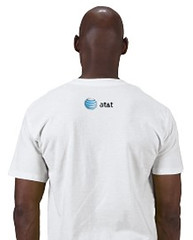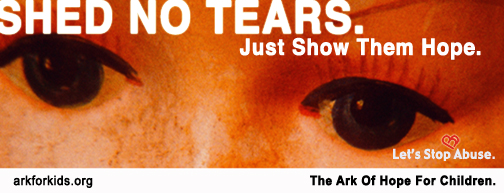Last weekend, my son was pretty upset after his plans to spend the afternoon with a friend fell through. He was rightfully disappointed, then started to sulk.
It may come as no surprise to some, but I’m not a big fan of anyone moping around, especially when it seems to be a plea for misery to have company. So I shared with him a little bit of wisdom and set him out on a task.
“Don't waste yourself in rejection, nor bark against the bad, but chant the beauty of the good.” — Ralph Waldo Emerson
Rather than losing your present to a past you wish might have been, why not get to work on a project, I said. Thanksgiving is right around the corner and it would be great of you to make a book of 10 things you might be thankful for, using art, words, and pictures.
He went right to it.
Since I’m not one to ask another to do a task that I myself would be unwilling to take, I set out to do the same — except mine comes in the form of a post, rather than ten pages of copy paper bound between construction paper with twine (Paper? How barbaric of me, I know.)
There is a lot to be thankful for, every minute of every day, as one of my friends (and client) likes to say. Here are ten at random.
iTunes. Yep, as silly as it sounds, portable entertainment still amazes me. Music sets a great pace for the gym; lectures from Stanford add value while cleaning house; and downloadable shows, they certainly came in handy during the 4-hour wait at the DMV. It’s media snacking at its best.
Communication Arts. If there was ever a case for printed publications, CA is it. Anytime I become frustrated by the abuses within our industry (meaningless creative, distress ads, and faux rules), CA reminds me that there is some amazing commercial talent out there.
One random call. You never really know if what you teach will be applied until a student calls from a bookstore to ask which book you recommend; and then wants to make sure she’s enrolled in anyother classes I might teach this spring. I’m teaching three, including social media.
The Recruiting Animal. Sure, he might be billed as the recruiting industry’s unabashed shock jock, but he quickly became one of my most trusted friends online. Never mind that I still pack silver when I’m around him. As I am with all my friends, online or off, I’m thankful to have them.
My daughter’s feet. The staph infection that had worked its way into the bones during our daughter’s first three months of life (a year and a half ago) will leave no permanent damage. We found out last week. It’s hard to believe she was once the size of a 12 oz. water bottle. Grateful doesn’t begin to measure little things as they relate to family.
Jericho fans. Who would have ever guessed that asking a simple question, like what would you do with 22,000 pounds of nuts, last May would have resulted to our longest-running dual case study. Jericho fans still amaze me, and watching Jane Sweat evolve as a blogger has been a gift. Check out her newest endeavor.
BlogCatalog. There are many social networks, and I appreciate several. But the BlogCatalog team and its members keep it real. Although I tend to focus on social media as applied to business communication, they are the ones who remind me it is often the least linked private blogs that add real value (more tomorrow).
Our clients. I rarely write about clients here, mostly because I find the daunting demands of disclosure as set by social media often irrelevant, inconsistent, and distracting (as if relationships somehow make us less than objective when objectivity is called upon). Even though I don’t highlight them here, I’m grateful for every assignment, account, and relationship. There would be no blog, nonprofit contributions, or university classes to teach without them.
Patrick Bertoletti. He set the world record for consuming four and three quarter pounds of turkey at the Thanksgiving Invitational eating contest two years ago. He did it in 12 minutes. What better way to add wonderment to a holiday. That and 110-foot Superman balloon that floated down Broadway during the Macy’s Thanksgiving Day Parade. Thanks, George, for our nation’s very first Thanksgiving proclamation.
Where The Wild Things Are. A book that reminds me, no matter what you do or where you go in life, taking friends, family, colleagues, clients, readers, and whomever for granted is easy. That is, until you no longer have them.
"... and into the night of his very own room where he found his supper waiting for him ... and it was still hot."
Happy Thanksgiving.

It may come as no surprise to some, but I’m not a big fan of anyone moping around, especially when it seems to be a plea for misery to have company. So I shared with him a little bit of wisdom and set him out on a task.
“Don't waste yourself in rejection, nor bark against the bad, but chant the beauty of the good.” — Ralph Waldo Emerson
Rather than losing your present to a past you wish might have been, why not get to work on a project, I said. Thanksgiving is right around the corner and it would be great of you to make a book of 10 things you might be thankful for, using art, words, and pictures.
He went right to it.
Since I’m not one to ask another to do a task that I myself would be unwilling to take, I set out to do the same — except mine comes in the form of a post, rather than ten pages of copy paper bound between construction paper with twine (Paper? How barbaric of me, I know.)
There is a lot to be thankful for, every minute of every day, as one of my friends (and client) likes to say. Here are ten at random.
iTunes. Yep, as silly as it sounds, portable entertainment still amazes me. Music sets a great pace for the gym; lectures from Stanford add value while cleaning house; and downloadable shows, they certainly came in handy during the 4-hour wait at the DMV. It’s media snacking at its best.
Communication Arts. If there was ever a case for printed publications, CA is it. Anytime I become frustrated by the abuses within our industry (meaningless creative, distress ads, and faux rules), CA reminds me that there is some amazing commercial talent out there.
One random call. You never really know if what you teach will be applied until a student calls from a bookstore to ask which book you recommend; and then wants to make sure she’s enrolled in anyother classes I might teach this spring. I’m teaching three, including social media.
The Recruiting Animal. Sure, he might be billed as the recruiting industry’s unabashed shock jock, but he quickly became one of my most trusted friends online. Never mind that I still pack silver when I’m around him. As I am with all my friends, online or off, I’m thankful to have them.
My daughter’s feet. The staph infection that had worked its way into the bones during our daughter’s first three months of life (a year and a half ago) will leave no permanent damage. We found out last week. It’s hard to believe she was once the size of a 12 oz. water bottle. Grateful doesn’t begin to measure little things as they relate to family.
Jericho fans. Who would have ever guessed that asking a simple question, like what would you do with 22,000 pounds of nuts, last May would have resulted to our longest-running dual case study. Jericho fans still amaze me, and watching Jane Sweat evolve as a blogger has been a gift. Check out her newest endeavor.
BlogCatalog. There are many social networks, and I appreciate several. But the BlogCatalog team and its members keep it real. Although I tend to focus on social media as applied to business communication, they are the ones who remind me it is often the least linked private blogs that add real value (more tomorrow).
Our clients. I rarely write about clients here, mostly because I find the daunting demands of disclosure as set by social media often irrelevant, inconsistent, and distracting (as if relationships somehow make us less than objective when objectivity is called upon). Even though I don’t highlight them here, I’m grateful for every assignment, account, and relationship. There would be no blog, nonprofit contributions, or university classes to teach without them.
Patrick Bertoletti. He set the world record for consuming four and three quarter pounds of turkey at the Thanksgiving Invitational eating contest two years ago. He did it in 12 minutes. What better way to add wonderment to a holiday. That and 110-foot Superman balloon that floated down Broadway during the Macy’s Thanksgiving Day Parade. Thanks, George, for our nation’s very first Thanksgiving proclamation.
Where The Wild Things Are. A book that reminds me, no matter what you do or where you go in life, taking friends, family, colleagues, clients, readers, and whomever for granted is easy. That is, until you no longer have them.
"... and into the night of his very own room where he found his supper waiting for him ... and it was still hot."
Happy Thanksgiving.























